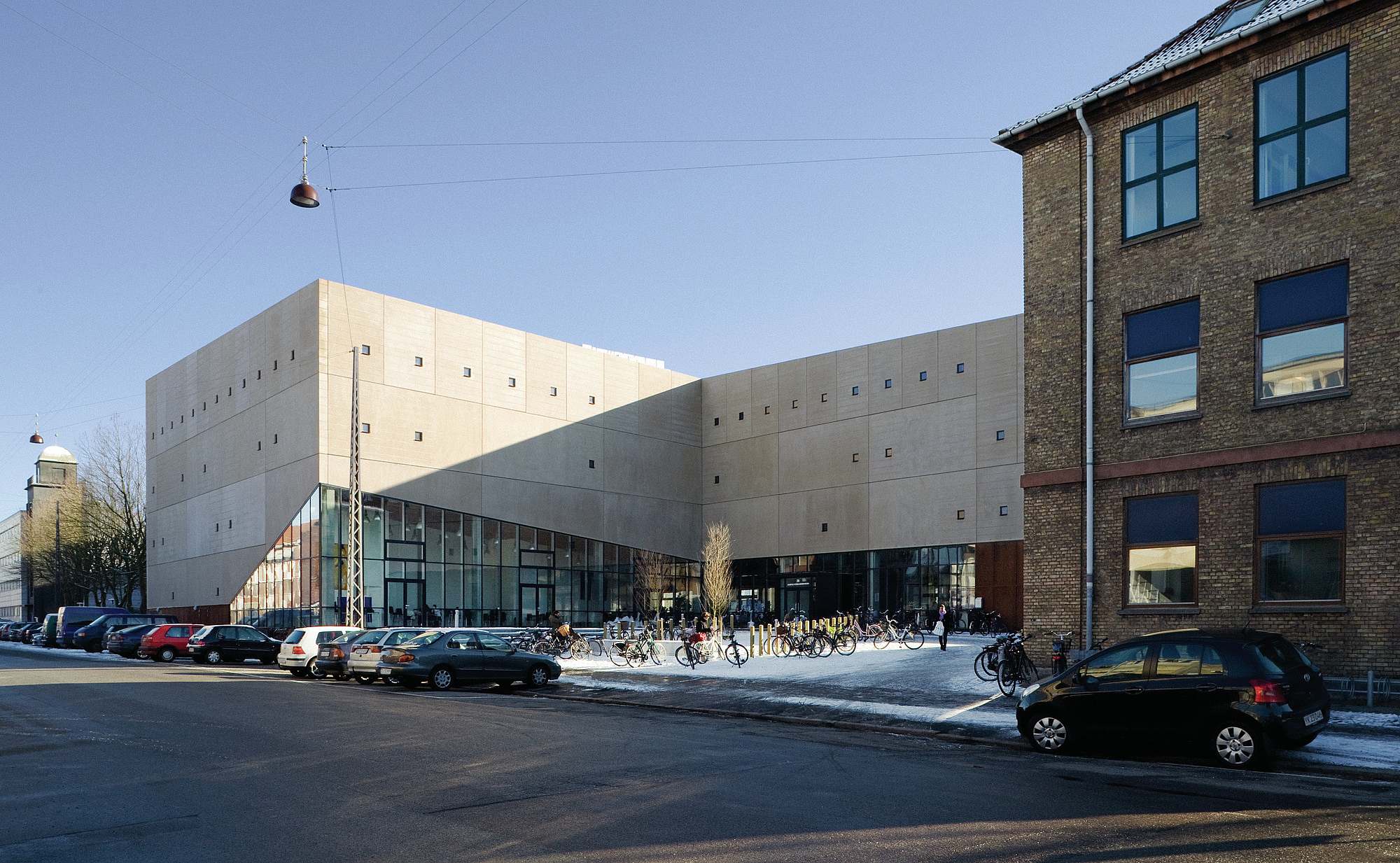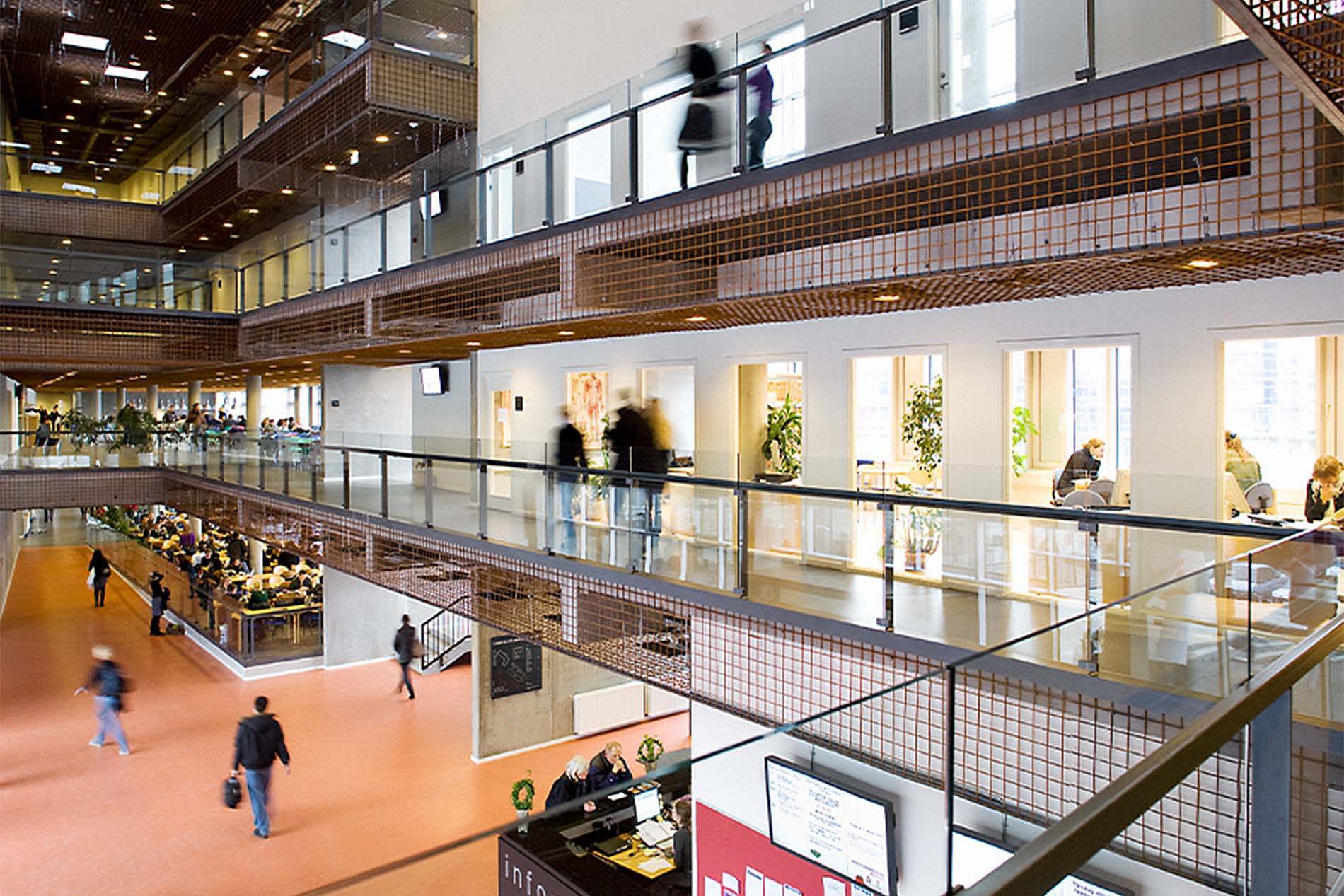The aim has been to create a basis for professional and interdisciplinary development while offering a unique study environment for students. Through its inviting entrance areas, the college opens up to the outside world and acts as a player in positive urban development.
Copenhagen NV
Denmark
Metropol University of Applied Sciences
2009
28.000 ㎡
220 M DKK
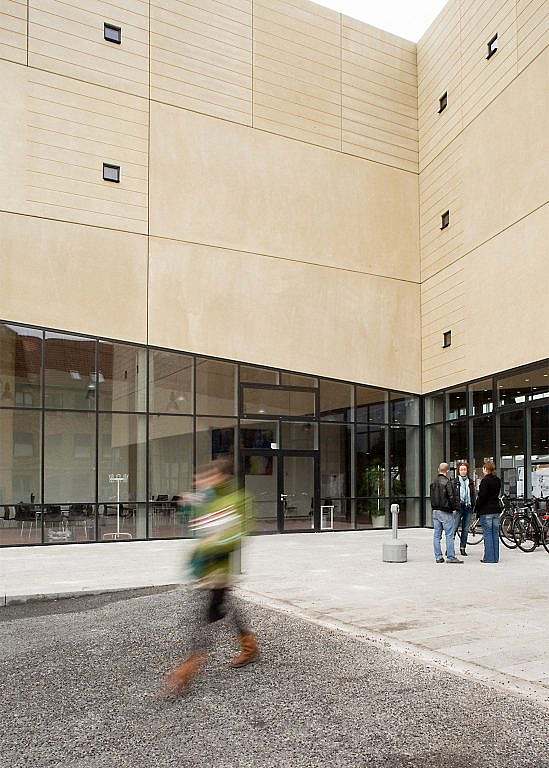
High ceilings and great views.
The school's agora is the first space you encounter when you enter the main entrance. Around the agora, the school's large common learning spaces (auditoriums, library, etc.) are linked to the school's main social spaces (canteen, student café) in a multi-use and flexible living and study area.
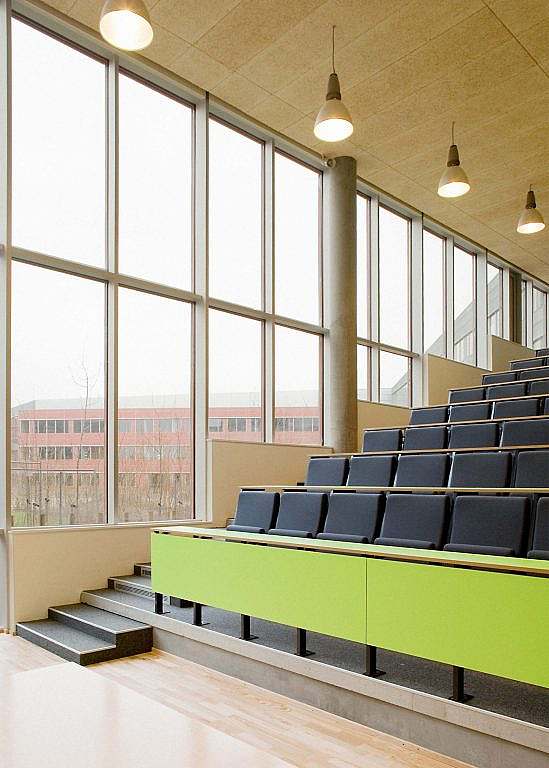
The green garden space unites the school visually and physically
The school clearly defines the edges of the square while opening up to its surroundings with new plazas and an internal green garden space accessible to all visitors
The school plays on several strings by offering a good neighbourhood alongside a vibrant and lush study environment.
Successful establishment of "schools within schools", fostering professional and interdisciplinary development and offering a unique study environment for students. The size and scope of the campus means that the school contributes as an active player in a positive urban development, where a large public institution influences and enhances the district and its development.
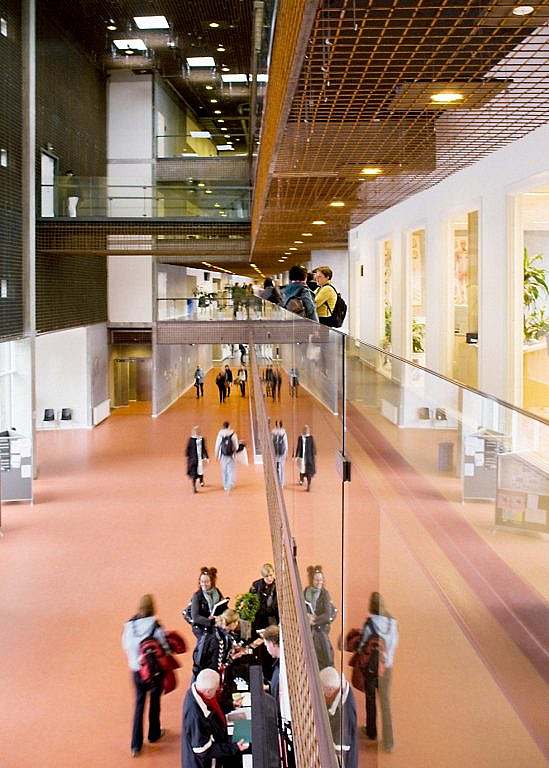
Teaching with a view of light and air
The auditoriums are equipped with folding walls, so that the size can be adapted to the current needs. The large windows draw in the surrounding city.

